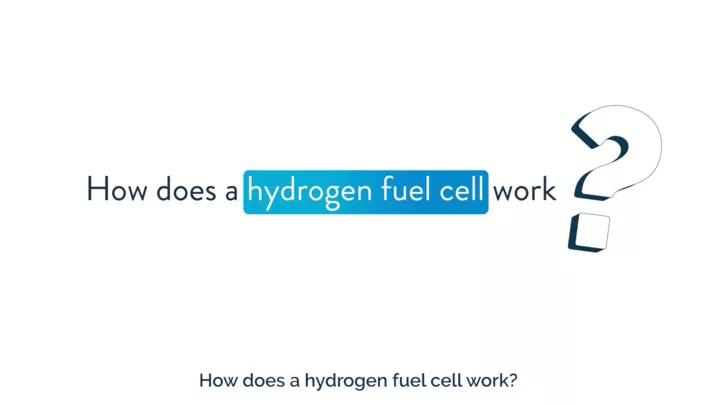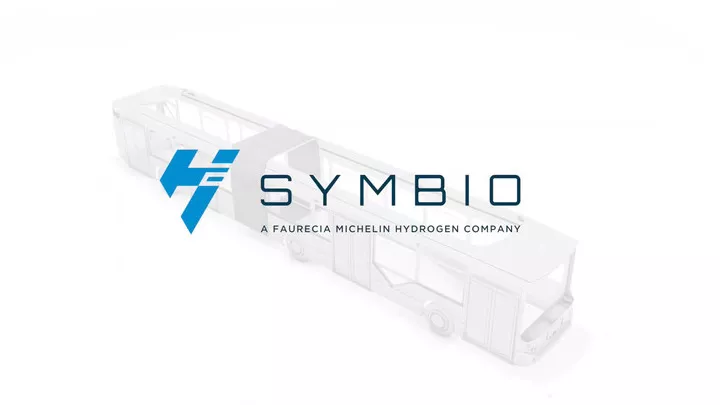How Hydrogen Fuel Cells work in buses: a simple explanation

Public transport is at a crossroads. The raise to decarbonize mobility and grow air quality call for bold new solutions. Hydrogen-powered buses offer a promising alternative to both diesel and Battery Electric Buses (BEB).
The hydrogen fuel cell is at the heart of this transformation. This article offers insights on this technology, its integration into buses and coaches, and a comparison with other technologies.
1. How does a hydrogen fuel cell work?
Unlike fossil fuels, hydrogen, when pumped into fuel cells is a clean energy at use. An electrochemical reaction between hydrogen and oxygen generates electricity and releases only water and heat, which is why it's said to be zero-emission.
1.1 Anode and cathode
- Hydrogen gas (H2) is injected at the anode. The anode catalyst layer breaks it down into hydrogen protons (H+) and electrons (e-).
- On a similar basis, oxygen (O2) from the air is drawn in at the cathode. The cathode catalyst layer supports the oxygen reduction and subsequently the combination with hydrogen ions, to produce water (H2O) and heat.
1.2. The electrical circuit
- The electrons produced at the anode cannot recombine directly with the oxygen at the cathode. They are forced to pass through an external electrical circuit, generating a direct current. This current can then power an electric motor or recharge an auxiliary battery.
1.3. The Proton Exchange Membrane (PEM)
- For Proton Exchange Membrane Cells (PEMC), the Proton Exchange Membrane (PEM) that separates the anode from the cathode is a key element. It must be permeable to hydrogen protons (H+) while blocking electrons (e-), thus enabling the flow of electricity.
1.4. The different types of hydrogen fuel cells
- There are various types of hydrogen fuel cell, the most common of which are Proton Exchange Membrane Fuel Cells (PEMFC) and solid oxide fuel cells (SOFC). They differ in terms of materials used and operating temperature.

2. Application of fuel cells to buses and coaches:
Integrating a fuel cell system into a bus or coach can be an opportunity to design next-generation vehicles with new powertrains. Specific components must be considered like hydrogen tanks, fuel cells, and energy management systems to optimize efficiency and passenger space.
In the case of retrofitting, this often involves using the engine bay space previously reserved for combustion engines or modifying the frame

2.1 Hydrogen storage system
- Hydrogen is stored under high pressure (350 to 700 bar) in on-board carbon composite tanks. Safety is a top priority, with multiple safety systems to prevent leaks.
2.2 Fuel cell power supply
- A control system converts the pressure of the stored hydrogen and continuously feeds the fuel cell.
2.3 Electric motor power supply
- The electricity generated by the fuel cell powers an electric motor that propels the bus. Motor power can be adapted to suit the performance requirements of the vehicle.
2.4 Auxiliary battery packs
- Auxiliary battery packs can be used to store excess energy produced by the fuel cell and release it during periods of high demand, such as acceleration.

Did you know?
Retrofitting may be an appropriate option that fleet managers need to consider in their decarbonization roadmap. to decarbonize existing fleets. After a detailed technical assessment to determine vehicle compatibility, conversion steps include installation of hydrogen tanks, fuel cell installation, and integration of electrical control systems. While this can be a significant initial investment, the long-term benefits in terms of operating costs and environmental footprint are significant.
Download our e-book: Hydrogen fuel cells for LCVs & Buses: 5 key considerations for product selection and technical specifications
3. Comparison with other technologies
The transition to cleaner energy sources in public transport is not limited to a single solution. Understanding the advantages and limitations of different technologies is essential to making the right decisions.
3.1 Fuel cell and battery electric buses
Fuel Cell Electric Buses (FCEB) and Battery Electric Buses (BEB) represent two different approaches to the electrification of transport. Fuel cells offer greater range and fast refueling in a matter of minutes, equivalent to the refueling time of a conventional diesel bus, which is a considerable advantage over electric batteries that require several hours to recharge. This means maximum operational flexibility and uptime. Hydrogen fuel cell technology also offers greater on-board energy density, which translates into optimized passenger capacity and thermal comfort.
Last but not least, infrastructure deployment at the depot is simpler: there's no need to increase the number of charging stations, and no need to connect to the electricity grid: One on-site electrolyser is enough to refuel all vehicles.
3.2 Fuel cell and diesel buses
When comparing fuel cells to diesel buses, the most obvious advantage is environmental impact. Whereas diesel buses emit greenhouse gases and pollutants, hydrogen buses emit only water at use. In operational terms, although the initial cost of hydrogen-powered buses is higher, the Total Cost of ownership (TCO) is partly balanced by two factors: the greater efficiency of their powertrains compared to diesel engines, and the declining cost of hydrogen as production and distribution infrastructure expands. In addition to the zero-emission advantage, the electric powertrain of the hydrogen fuel cell buses is also very silent.

4. Conclusion
Hydrogen fuel cells represent an attractive alternative to current bus propulsion technologies, offering advantages in terms of performance, range and emissions. Although their integration requires a review of maintenance and infrastructure practices, the potential for sustainable mobility with low environmental impact is significant. It is important to consider costs, hydrogen accessibility and infrastructure evolution when evaluating this technology against existing diesel and battery electric options. As the public transport industry continues to evolve, hydrogen fuel cells will play a key role in the composition of tomorrow's bus fleets.
